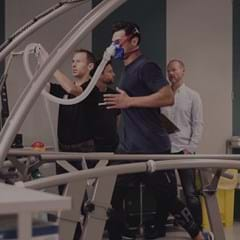According to The World Health Organization (WHO), adults should do 150 minutes of moderate-intensity exercise per week.
This recommendation stems from the fact that 150 minutes of moderate-intensity exercise per week is shown to generate a significant decrease in mortality risk – around 30 percent, in fact. This means people who follow these exercise guidelines tend to die later in life. Not to mention, if we do this much activity each week, we function better and boost our mental health.
Sold! Spurred on by those facts, I’ll do 150 minutes of moderate activity per week – as I’m sure you will too. After all, moderate exercise could be any aerobic activity sustained for around 30 minutes or longer, where you can still have a conversation, but you’d struggle to sing (clearly showering doesn’t count). That doesn’t seem like too much to ask.
Now let’s ask the general population of adults IF we are doing that much exercise.
Here’s where it gets interesting – 50 percent of adults report completing the required 150 minutes of moderate-intensity exercise each week. The key word in that sentence is: REPORT. We know that people are notoriously unreliable when you ask them to assess their activity level.
When activity level is actually MEASURED (using activity trackers, as in this study) we get a very different number. The number of people reaching the exercise target drops to less than 10 percent. Meaning 90 percent of adults fall short.
The people who developed the guidelines based them on inaccurate reporting.
What a disaster, you say. BUT, there’s a plot twist. Those clever people who came up with the guidelines assessed the change in mortality risk based on self-reported activity levels. Therefore, when experts discovered that doing “150 minutes” of exercise reduced mortality, the people they asked were fudging the numbers – because that’s what we do when we’re asked about exercise. So, the guidelines still work based on the fact that we all get a bit optimistic. Hooray!
So, how much exercise do you really need?
Given the people who developed the guidelines based them on inaccurate reporting, how much exercise do we REALLY need to do to achieve these health benefits?
The actual number is much less.
The answer, weirdly – is about five minutes per day based on the work of Ekelund and colleagues. They found that five minutes of moderate to vigorous physical activity per day or 35 minutes per week (based on measured activity), equaled the benefits of the 150 minutes advised by The World Health Organization.
That sounds much more achievable!
This makes me wonder why experts come up with guidelines based on deceptive or skewed information and insist people perform that amount of exercise, while assuming that their self-reports will be just as far from the truth.
Why don’t we just tell everyone that five minutes of brisk walking per day makes for a great start?! And it absolutely does – we get the biggest benefits when we go from being sedentary to doing... well, anything.
Guidelines based on misinformation may be preventing people from taking those first crucial steps – literally!
The upshot is, it takes very little to have a big effect.
The upshot is, it takes very little exercise to have a big effect. Thankfully, researchers are now focused on establishing the minimum guidelines based on accurate, measured data to reduce the burden on those who are less active.
In the meantime, if you have a loved one, a friend, or a colleague who struggles to be active and feels daunted by the guidelines – take them for a five-minute brisk walk. You may just be saving their life.








